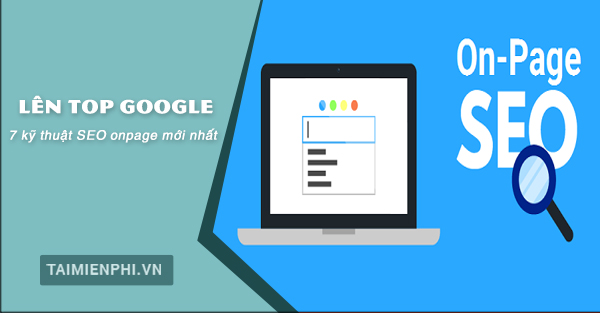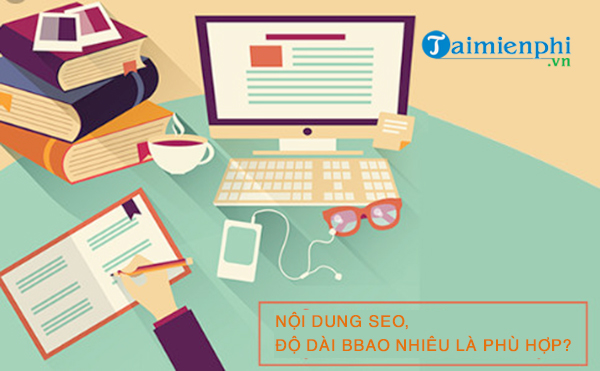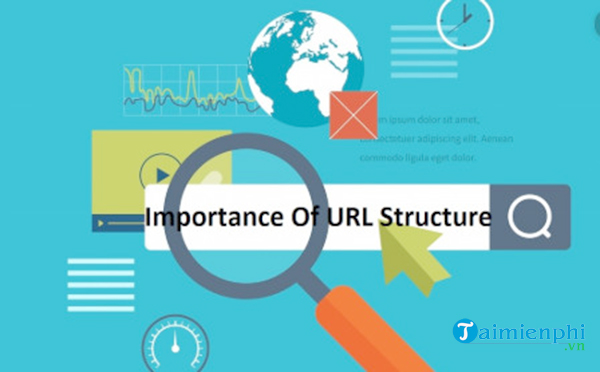After the latest algorithm update from Google, most webmasters are redirecting their efforts and resources to on-page SEO. So, if you want to improve your website’s ranking, you can refer to 7 on-page SEO techniques the latest listed in this article by Taimienphi.vn.

On-page SEO: the latest on-page seo concepts, checklists and techniques.
7 best onpage SEO techniques to get to the top of Google
1. What is on-page SEO?
On-page SEO (onsite SEO) is a concept that refers to all actions taken directly within a web page with the main goal of improving its position in search rankings. Specifically, these are actions that can only be used by those who have access to and control of the website.
On-page SEO is one of the most important aspects of the website optimization process.
2. 7 best onpage SEO techniques 2020
2.1. Make user experience a top priority
As a webmaster, the most important thing you need to pay attention to is user experience evaluation. Put yourself in their shoes, then check what you see on your website, and what can you improve?
The bounce rate of a website is also a factor that search engines take into account when determining rankings in search results. Bounce rate refers to the percentage of website visitors that quickly leave after viewing a single piece of content. In fact, if a user has a bad experience when visiting your website, they will leave it immediately.
A bad user experience will increase your bounce rate and negatively affect your site’s rankings. To improve the user experience, you need the best way to present the content on the page.
This depends on the device or technology the visitor is using when accessing the website. In fact, websites are often the most responsive on mobile devices. That’s why you should design a mobile version of your website.
Another method to enhance your user experience is to make sure that all the links on the page work. Anyone will feel frustrated or annoyed when clicking on a broken link.

Focusing on user experience is one of the best onpage seo techniques that should be focused on in 2020
To analyze and measure the experience on the website, we cannot ignore the SEO support tools. Using a smart combination of onpage + offpage SEO tools, planning, managing and measuring the website will become much simpler and easier.
2.2. Use the right title and meta description
When search engines scan your website, the first thing it does is read the content name, tags and description, then the title and content.
The most important note here is that the title, tags, and description should have a connection with the content. In fact, many webmasters often try to circumvent the law by using titles and descriptions that have nothing to do with the content. Never try this as your site may be penalized or banned.
Besides, if your content contains a lot of images and videos, you still need to include the right title, tags, and description because otherwise the content will not be readable by search engines. That is, you are forced to provide clues so that the engine can understand your video or image.
2.3. Keyword
Everyone knows that the use of keywords is extremely important in the content writing process, but you also need to pay attention to the keyword density on the website. If you know how to use keywords, keyword variations and integrate them into the content and structure of your website, your website will definitely be ranked higher by search engines.
When writing titles or content, you must not forget to insert keywords, and remember to use them whenever you feel necessary. However, it shouldn’t”keyword stuffing” – Google will give your website a bad rating
Attention: Keyword density refers to the measurement of the percentage of keywords or phrases used on a page. Most SEO experts suggest that the best fit is around 15%. In addition, you can also use some tools or applications to calculate the most accurate keyword density.
2.4. Length of content
Make sure that the content that you publish on the page is the right length. This is especially important if you have a blog or a content-heavy website. Usually articles about 1,000 words long have a higher chance of ranking than articles that are 500 words long. The length of the content can directly affect the SEO results.
Posts with insufficient length, thin content are often underestimated by Google because there is not enough useful information. Specifically, the article needs to be 1,000 words or more long. This also means that you provide more content to your readers, they will spend more time on the page, and the search engines will appreciate it more positively.

Onpage SEO techniques, Latest onpage SEO Checklist 2020.
2.5. Internal and external linking strategy
Next, pay attention to your internal and external linking strategies
Internal links are links to other pages in your website and basic onsite SEO techniques that you need to master.
You should only implement an internal linking strategy if the two pages’ content is truly related. For example, you write a post about Facebook marketing and at the same time, you have a blog about optimizing content on Facebook. Don’t just create internal links for the sake of linking content on a page, you could be penalized for violations.
The same goes for outbound linking. There are times when it is necessary to link to content outside of your website. In fact, it’s also important to link sites with similar themes to yours.
For example: If you blog about acrylic paint, you can link your blog to other sites that also provide information about acrylic paints. This will help readers get more information about their area of interest. It can be said that external linking improves the user experience.
External links also help increase targeted traffic to your website. Most webmasters keep track of the pages that are linked to the site they are in charge of.
2.6. URL Optimization
Optimizing URL descriptions is one of the jobs that onpage SEOs can use to improve the website’s ranking on search results. As a general rule, the URL should contain related keywords, not just random words or numbers.
URLs with a clear description are likely to get more clicks from readers because it can get a rough sense of the entire content of the website or article.

Website URL Optimization – Best Onpage SEO Techniques of 2020.
2.7. Improve website loading speed
Anyone will get frustrated when it takes too long to access a website. If your page has a slow loading speed, your search rankings will also decrease. Besides, the loading speed of the website also affects the bounce rate, because most users will leave the page immediately after seeing the page failed to load.
To improve website loading speed, you can try the following solutions:
+ Use a reliable web hosting service
+ Remove unnecessary applications on the page
+ Make sure to use a search engine friendly content management system
+ Don’t saturate your site with content that takes time to load like too many videos or images.
If you want to learn more about website speed testing tools and how to improve, you can refer to this article. How does page load speed affect SEO? ? How to reduce page load time?” by Taimienphi.vn
https://thuthuat.taimienphi.vn/7-ky-thuat-seo-onpage-tot-nhat-de-len-top-1-google-54886n.aspx
These are all the best onpage SEO techniques we want you to master. Hopefully the article will help you understand and update the latest information about SEO, thereby easily adjusting the content on the website and achieving the highest ranking on Google search results. Good luck.
Related keywords:
Onpage seo techniques 2020
best onpage seo techniques, latest onpage seo techniques,
Source link: 7 best onpage SEO techniques to get to the top of Google
– Emergenceingames.com
